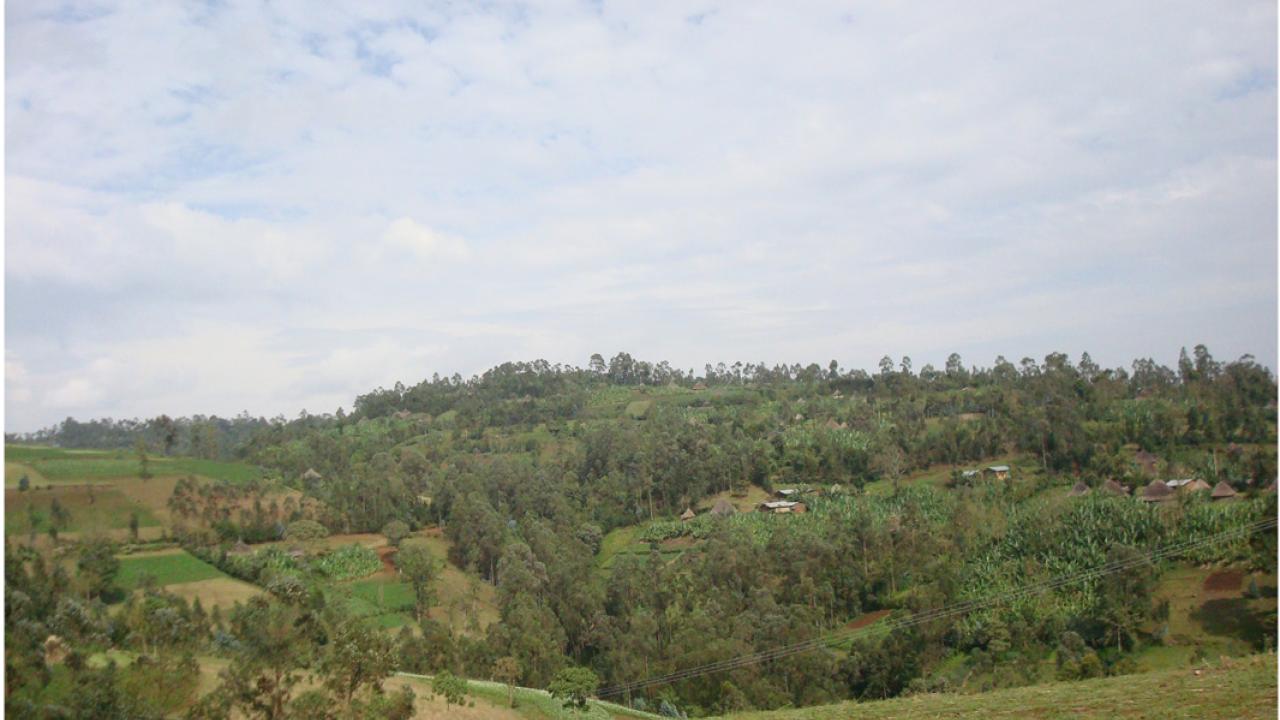
Agriculture accounts for 80 percent employment in Ethiopia, with 95 percent of the cultivated land on smallholdings. Low input use has contributed to persistent food insecurity and limited agricultural growth. Most Ethiopian agriculture is rain-fed, subject to considerable weather variations. The overwhelming reason for low use of modern productive inputs is that they are generally considered too expensive or that there is a lack of cash. Any efforts to improve food security or promote agricultural growth in Ethiopia must address the financial constraints linked with low productivity.
Key Project Features
Innovation: Interlinked credit and insurance for borrower and lender to boost hybrid seed and fertilizer adoption
Pilot Area Market Size: 14,623 farmers
Insurance Linked to: Grains
Index Used: Rainfall
Project Rollout Date: August 2012 Nyala Insurance
Farmer Education: Outreach from Ministry of Agriculture
 Problems of credit availability come both from the supply side and the demand side. Financial institutions are reluctant to provide credit to smallholder farmers with few assets to serve as collateral. Farmers, well aware of their vulnerability to weather shocks, are unwilling to take on the additional risk posed by the adoption of improved technology and the obligation to repay the loan required to purchase it. As a result of both uninsured risk and constrained financial opportunities, farmers in Ethiopia continue to suffer low productivity and persistent poverty.
Problems of credit availability come both from the supply side and the demand side. Financial institutions are reluctant to provide credit to smallholder farmers with few assets to serve as collateral. Farmers, well aware of their vulnerability to weather shocks, are unwilling to take on the additional risk posed by the adoption of improved technology and the obligation to repay the loan required to purchase it. As a result of both uninsured risk and constrained financial opportunities, farmers in Ethiopia continue to suffer low productivity and persistent poverty.
To solve this problem, BASIS I4 researchers at University of California San Diego, FAO and University of Athens designed and are testing an interlinked credit and insurance contract. The interlinked contract allows the insurance to serve as collateral on the loan, diminishing the risk for both farmers and financial institutions. In the case of drought, for example, farmers will not be doubly burdened by reduced yields and outstanding debt; the insurance payouts will cover the loan payments. This will prevent farmers from selling off assets to repay the loan during bad years. It will also encourage financial institutions, who have increased certainty loans will be repaid even in low yield years, to offer financial services (including credit for inputs).
By simultaneously providing credit and insurance, researchers hypothesize that they can combat the interlocked set of market failures that hamper agricultural growth and perpetuate poverty. If successful, this product should increase agricultural productivity, improve food security, and increase smallholder resilience.
Critical Subsidies
In 2012, insurance policies were sold to 202 individuals. In the kebeles (villages) targeted by the study, the uptake rate was 25-37 percent. While most people in the study kebeles were offered some sort of discount, uptake was exactly zero among those who recieved no voucher coupon at all. Outside the study kebeles, 4,000 farmers were offered the insurance without any subsidy coupon, and the take-up rate was also low, at roughly half of one percent.
This evidence indicates that the offer of a voucher had enormous impact on take-up rates. Even relatively small subsidies, however, significantly increased up-take rates to almost 40 percent. These findings lay a firm foundation for the next round of implementation, data collection, and analysis.
Key Lessons
Progress: The first year of the project was dedicated to pre-campaign activities, conducted in collaboration with Nyala Insurance and Dashen Bank (reinsured by Swiss Re). In 2012, a sales window offered products to 34 kebeles. In just under half of the kebeles, households were offered standalone insurance contracts, and in the remaining kebeles they were offered interlinked credit and insurance contracts as well as standalone insurance contracts. One in five levels of randomly assigned subsidy vouchers were given to each studied household, which could be redeemed if they bought weather insurance.
Challenges: The research team is now trying to prove that the product is commercially viable. Sales in the study sample, where vouchers were used, were encouragingly high. In the rest of the pilot zone, however, outside of the study area, sales were disappointing. Researchers now hope that through additional subsidies to the broader pilot area outside the study, they can demonstrate to commercial partners the viability of the product for scalability.
Next Steps: Over the next year, researchers will build on the preliminary results from the first year of sales, including the compelling findings about the apparently critical impacts of subsidies in increasing uptake of what is a rather novel product to most smallholders. Among the goals for the second year of implementation are demonstrating to partners the potential for scale up and sustainability. The activity hopes to collaborate with broader efforts to increase technology adoption and promote value chain development. The research to determine the impact of credit access is also ongoing.
This report is made possible by the generous support of the American people through the United States Agency for International Development (USAID). The contents are the responsibility of the Feed the Future Innovation Lab for Assets and Market Access at UC Davis and do not necessarily reflect the views of USAID or the United States Government.
